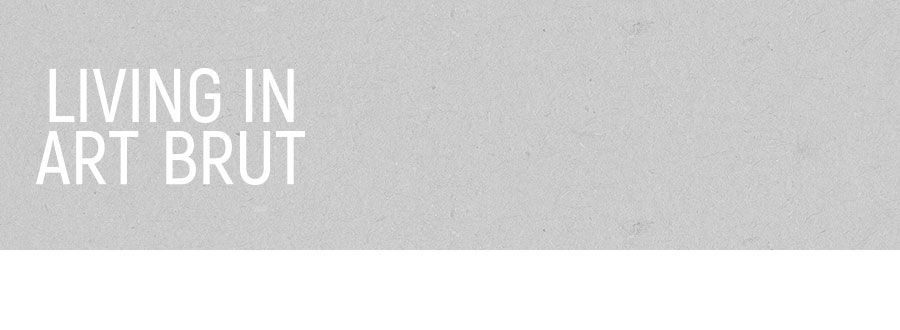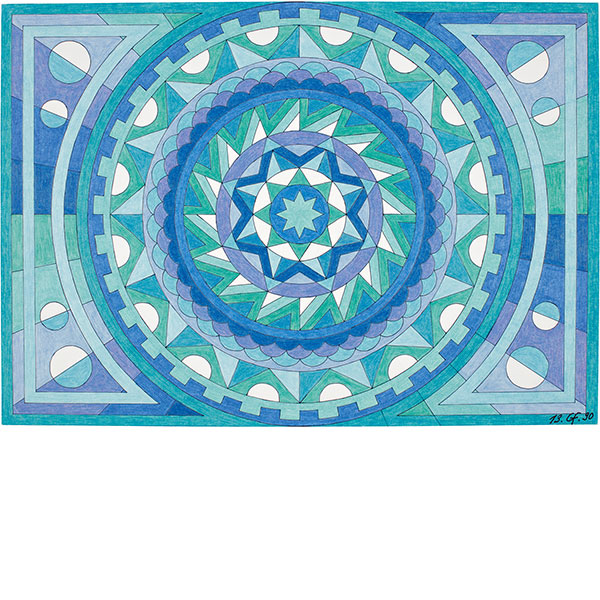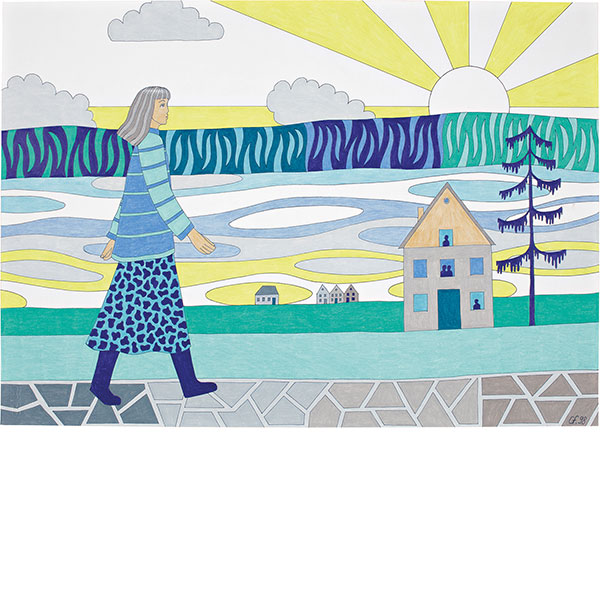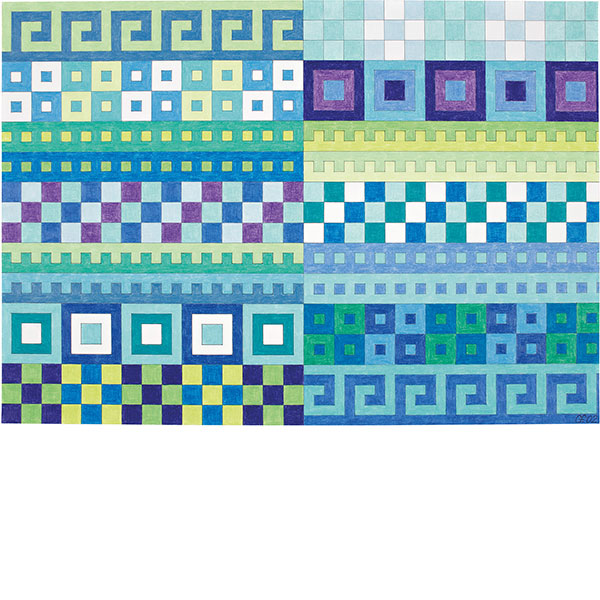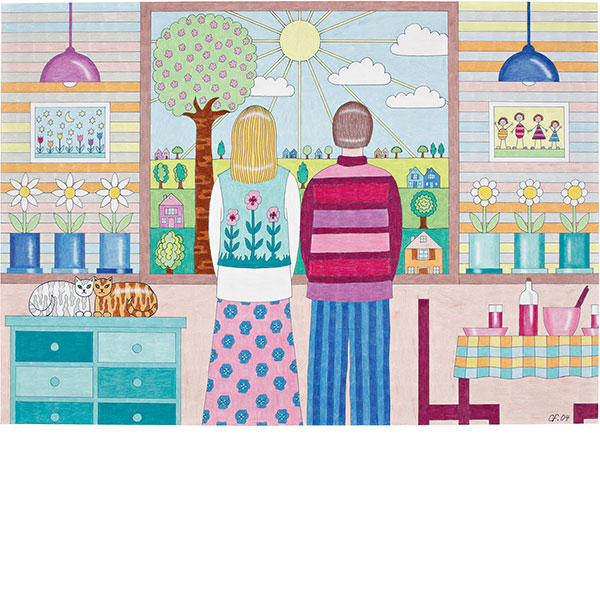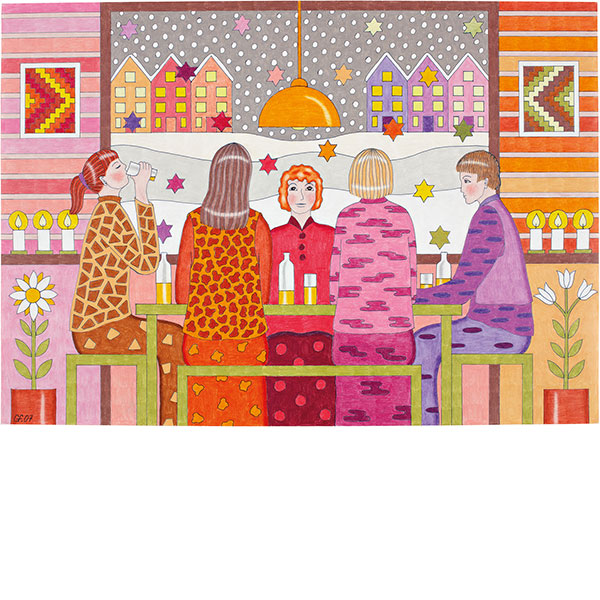Gertrud Frey
1952 to 2022, Switzerland
Gertrud Frey grew up in Bülach in the Swiss canton of Zurich. As one of six children in a working-class family, she was raised in humble circumstances. Her father worked in a warehouse.
Gertrud trained as a nursery school teacher, gaining her diploma in 1974. Learning a respected professionwas something she considered important, as she expressedstrongly in her handwritten memoirs. She went on to work as a nursery school teacher, but also did cleaning jobs and delivered newspapers. From 1983 to 1984, she worked on her art in her sublet studio at the Rote Fabrik (Red Factory), a cultural centre in Zurich. She lived in communes and squats amongst Zurich’s autonomous scene. Gertrud was seen as a rebel who defied social norms and was always searching for something. Yet she was also described as a shy and naïve dreamer. Squatting, demonstrating, drinking and relationships with men were part of her everyday life.
Inspired by a book about Mother Teresa, Gertrud was keen to break away from the life she had been leading and embrace faith and poverty. Insomnia and psychoses followed, and she spent several periods at psychiatric hospitals in Switzerland from 1985 onwards. Between 1986 and 2012, Gertrud lived in a residential community for women with mental health problems, still with occasional stays at psychiatric institutions (mainly the Burghölzli hospital in Zurich). During this time, she also actively worked on her art. Following several attempts to take her own life, she lost her place in the residential community. After that, she also lost her ability to draw. She moved into a care facility and was able to so somework in a sheltered workshop. In 2022, she died from coronavirus at Münsterlingen Hospital in the canton of Thurgau.
Gertrud Frey was a self-taught artist who produced drawings between 1990 and 2012. She mainly created her colourful works on paper, mostly using wax crayons and coloured pencils and usually in a 60 x 40 cm format. Her motifs are often based on geometric patterns and shapes, such as mandalas, waved lines or jacquard patterns. She may have beentrying to evoke a sense of harmony, order and stability in these carefully structured compositions. However, she also drew people in domestic settings, often depicting them from behind as they stand gazing out of a window at the landscape beyond, creating an atmosphere of longing or highlighting details. She held her only exhibition in 1990 at the Riesbach community centre in Zurich. Her works attracted some media attention, but only one of them was sold.
After her death, Gertrud Frey’s siblings discovered over 600 of her pieces and recognised the artistic quality of her work in their consistently high standard. These works have now been documented and catalogued and gifted to European museums and private collectors by Gertrud Frey’s siblings, Rita Mantovani and Urs Frey, with the support of Max E. Ammann. Thanks to these donations, pieces by Gertrud Frey can now be seen in places like Zurich’s Musée Visionnaire.This art spacefeatured them in the “Life happens!” group exhibition from June to December 2023. The Kansallismuseo – the National Museum of Finland in Helsinki – also paid tribute to Gertrud Frey in a group exhibition in 2023.
Her works can be found in the private collections of Korine and Max E. Ammann and of Karin and Gerhard Dammann – both in Switzerland.
Selected works


